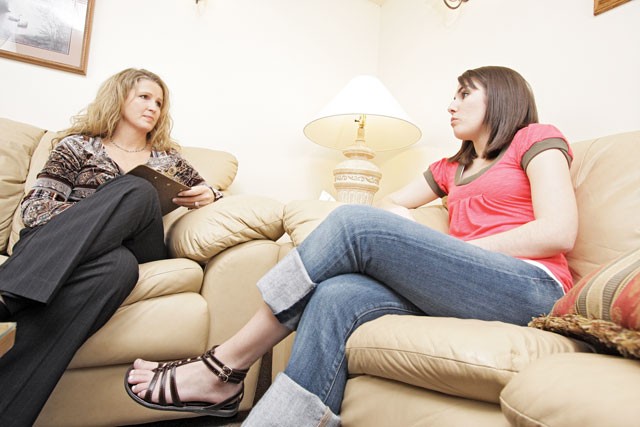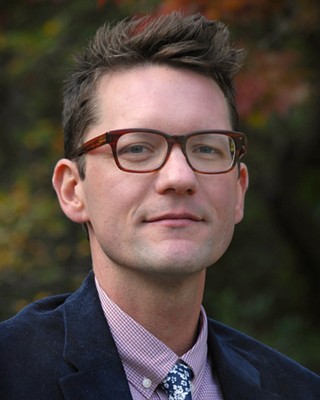
It was in a grocery store one day when a stranger approached Katy’s mother in tears. The stranger — who somehow knew that Katy had lived for eight years with anorexia — wanted to know where she could get help for her own child who had an eating disorder.
Katy, who is now 26 and asked that her real name not be used, says the confrontation between her mom and the woman sheds light on what has been a problem in Spokane for years: the sickness is so prevalent that even strangers can see it, yet there has long been virtually no treatment for people with eating disorders — and little knowledge of the disease even among physicians. The disease eventually put Katy in the hospital, connected to a feeding tube, and has left her with a heart condition that she fears could prevent her from starting nursing school this fall.
But, she adds, things are changing. In the last three years, support groups for patients and their family members have multiplied, and the number of therapists treating the disease has grown. And now Spokane even has its own pediatrician and adolescent medicine specialist who has a wide knowledge of eating disorders.
Katy says she hopes all the new options will help girls, boys — anybody with the disease — to avoid what she went, and is going, through.
“If I had been treated as an adolescent, I wouldn’t a) have had these cardiac complications, and b) I would have had a quicker recovery,” Katy says.Four years ago, Maureen Reynolds’ 25-year-old daughter, Amy, died from complications related to an eating disorder. At the time, Reynolds didn’t know where to turn. “When we moved her to Spokane, we couldn’t find any help,” she says. “There were a few therapists in town, but that was about it.”
Since then, Reynolds has become a leading figure in Spokane’s eating disorders population, mainly by running support groups for family members and friends of people with the disease. Such support groups weren’t around when she was trying to find help for her daughter, herself and the entire family.
“You’re not alone out there,” she says of the groups’ importance. “The disease is so multifaceted and insidious — and so long-term — that you can feel isolated and alone.”
If families rely on groups like Reynolds’, then patients have Inland Northwest Health Service’s Community Health Education and Resources (CHER). The organization has patient support groups and therapy groups and has organized an Eating Disorders Awareness Week at the end of every February. This year, they helped put on a fashion show that raised money and celebrated all body types.
Leyna Odell, a health education specialist with CHER, says the group’s most important goal is education. The organization put together an eating disorder resource guide for the Inland Northwest.
“It’s not just a girl’s disease, and it’s not just a rich white girl’s disease. It affects all ethnicities, all genders and all ages. … It starts in the teens and 20s. But we have seen a lot of 30- and 40-year-olds still having issues with it.”Spokane’s eating disorder support network has made some progress recently, Dee Myers says, but it has a way to go. “At least at this point, we have consistent groups, support groups and networks. But I have had a waiting list with 10 people for more than four years,” says Myers, who’s a professional therapist and member of the Inland Northwest Task on Eating Disorders. “It gets overwhelming as a professional. I refer people to other therapists on the resource guide, but they’re full.”
Myers has been working in the field in Spokane since 1995 and has witnessed more ups and downs with the support movement than she cares to remember.
“In this area, it’s always been hard to keep groups consistently going. I was the only one with a group for a very long time. … The fact that CHER has helped the task force get going is wonderful,” she says. “There are still professionals — doctors — who have no idea about [the disease]. That’s why we did the fashion show and the resource guide, to raise funding [and awareness] for the task force.”
Myers says what’s greatly needed in the area is a one-stop-shopping location, where patients can see a nutritionist, doctor and therapist; attend a support group; or participate in a cooking class. It would be a big change from how things are done now, with patients scrambling around town with appointments on different days and at different times.
The lack of convenience has contributed to a higher rate of relapse. “It’s been a struggle over the last 15 years, for sure,” Myers says. “I hope we can continue these programs we’ve started. We get this great energy and then it fizzles. CHER’s backing us is amazing and has been a huge help.”
Katy says that having a strong network of support and treatment is vital in helping people with the disease — even if just to help them identify and treat their problems earlier.
“When I was really sick, I didn’t want help,” she says. “I thought maybe it would just go away.”




















